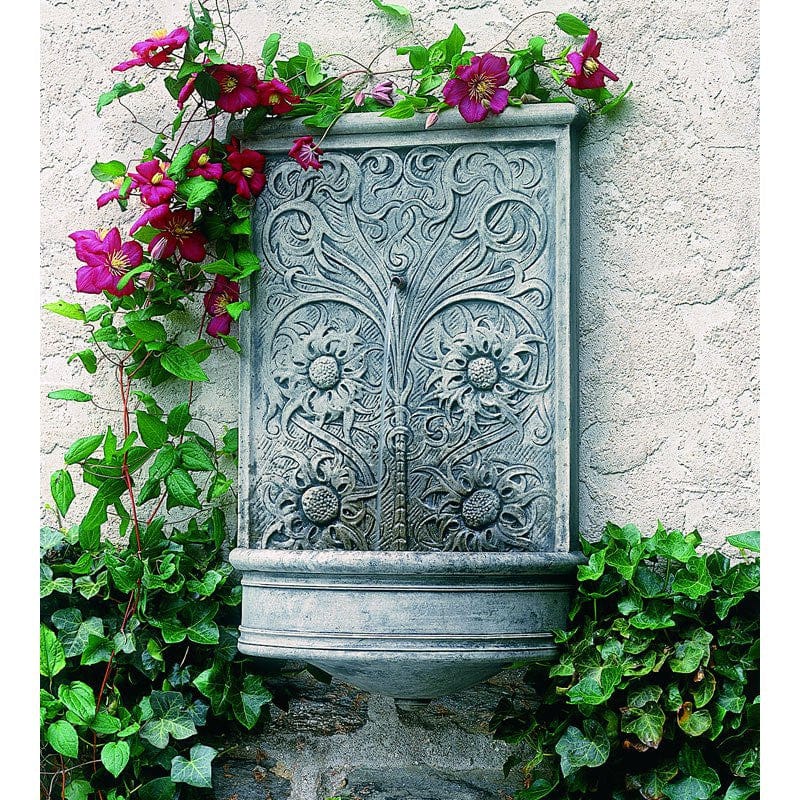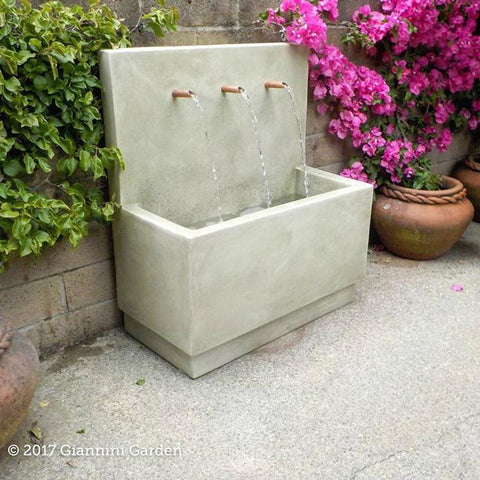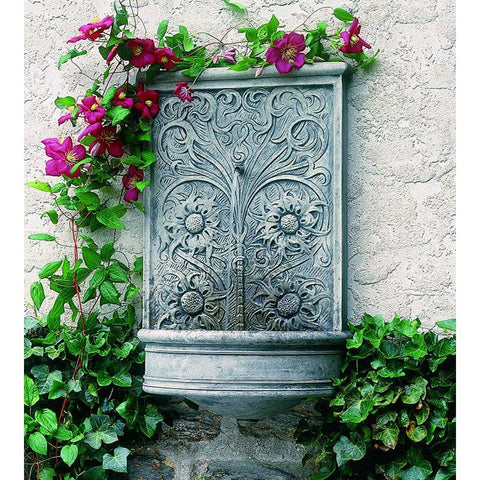After the final winter freeze and the dreariness of the cold season passes, many of us get the ‘green thumb itch,’ and are ready to begin planting. With the mixture of sunshine and rain that spring offers, it’s hard to resist watching the green take over and getting your yard ready for summer activities.
Planting around a water feature is a transformative way to elevate the beauty and tranquility of your outdoor space. Planting isn’t the simplest of tasks and it requires a lot of time, patience, and loads of care. It also takes research and making sure that your plant will survive in the climate you live in. However, once you’ve prepared yourself and have gotten started, the rewards are so worth the time it took to get there.
Discover how to decorate around a water fountain with a careful selection of complementary plants, incorporating decorative elements such as stones or pebbles, and creating a harmonious balance between foliage and the soothing sound of flowing water.
If you’re getting the green thumb itch, get ready to scratch it! Read up on these easy tips and tricks that will make the area around your outdoor water feature blossom.
For The Love Of Potted Plants
It’s hard to even find an opening statement for this topic because potted plants are literally perfect for both bringing your plants indoors and beautifying your outdoors. They are loaded with health benefits and are quite frankly just gorgeous to look at. So, take something that’s already beautiful (a trendy outdoor water feature) and add plants or flowers around it.
Choose the pots you want, there are millions of styles to choose from modern outdoor flower pots to animal flower planters, whatever variety you want we are sure to have. Preferably, check out the landscape around your water feature and create a theme in your head. Then head to your local plant nursery, store, garden center, or even online to purchase the perfect plants.
It is all about your personal preference and style. You can pot and/or repot anything that hasn’t grown huge already. Let’s take a look at a few favorites:
-
Cacti: Getting a cactus (or two...or eight) will look amazing around any water feature and there’s a bonus feature - they require hardly any care or watering. You can purchase adult cacti and have it bedded into a standing pot (extra large) or you can purchase multiple baby cacti and put them all in the same pot (medium-large) and watch them grow! Though they are a plant that will take years to grow in size, you can get many of them for relatively cheap and create your own cacti garden.
You can read up on which cacti will flourish for your location in our Succulent Guidebook - if you live somewhere very rainy cacti isn’t a very good option. They grow best in dry to moderate climates and need watering once a week. As for planting and re-potting, get creative and good luck! I personally use tongs for re-potting baby cacti and always wear thick gardening gloves.
-
Violas, Daffodils, And Other Spring Flowers: What makes spring flowers such an easy decision is how fast they grow and how lively and colorful they make an area. Plus, they are fairly easy to grow in any climate, keep the bees happy, and smell amazing. You can easily plant the seeds in regular soil yourself and into any size pot and watch the sprouts shoot up (my favorite part). Or, you can go to the plant nursery and browse through all the colors and scents, bring them home, and re pot them yourself.
When you purchase spring flowers and begin re-potting them, you’ll notice that the roots have grown in one straight cube - you’ll want to break that apart and spread the roots out towards the circumference of your pot. If you don’t do this, your flowers will continue to grow in that one spot instead of rooting through the rest of your pot. These need regular watering, daily, or as soon as you don’t see any dampness in your pot.
-
Attractive Leafy Plants: If your water feature is in a cool and shady area, certain plants with attractive leaves such as caladiums, coleus, and hostas will flourish. Some leafy plants may even leave your pot and start traveling up walls which is not a bad thing - it makes the area surrounding your water feature very romantic.
Leafy plants look great potted on the ground or hanging. If they are hung they have room to grow and drape down around your water feature. Plants like these will need regular watering and trimming, they grow very fast.
Some potted plants need more sun and water than others, and some will grow in crazy directions. Always make sure your pot has a hole or multiple holes at the bottom for the water to flow out or you’ll deal with root-rot and other issues. Going to any plant nursery can be overwhelming, don’t be afraid to ask a gardener or florist what would be best for your area and do further research on the plants you choose.
Romantic Wall-Climbing Plants
When you think of brick walls covered in foliage you might think of a growing period that takes hundreds of years and possibly something you’d only see in historical sites. Surprisingly, climbing plants accumulate very fast and will have you constantly watching and working. Vines are a great way to decorate an area with plenty of vertical space but not much horizontal space.
Wall-climbing vines are not good for people who are renting an apartment or living somewhere temporarily. If you love plants but you’re not sure how long you’ll be there, stick with potted plants. The reason is due to how they work - once you start growing them they won’t stop and soon enough they will be out of reach.
Though shortlisted; climbing plants are vast and you can choose whichever type you want according to your scheme simply by searching online. Do you want something seasonal that flowers along your wall or just vibrant leaves? Climbing plants have no limit...literally. Here’s what to do with the few we’ve mentioned:
-
Boston Ivy: Clinging very well to any wall, Boston Ivy is a great ornamental climbing plant that will give your water features background a boost. Your best bet is to plant Boston Ivy 12 inches from whichever wall you’re trying to make it grow. Make sure to do a deep watering at least once a week. This plant can grow up to 10 feet per year.
-
Honeysuckle: Honeysuckle’s are seen as weeds in many places despite their sweet smell and multiple health benefits. Who wouldn’t want Honeysuckle climbing up walls over a water feature? Honeysuckles take well to an area that is sturdy such as a wall or a fence and will continue to flourish. It climbs at a decent rate around an area and is easy to care for.
-
Hydrangea: Known as one of the best plants for scaling walls, there are many different variants of hydrangeas that climb walls. This plant is one of the best for the indecisive, as there are many versions to choose from that all blossom differently. Most commonly, you’ll see hydrangeas with white blossoms during the summer and golden leaves during Autumn. Also, they can grow up to 50 feet!
Final Thoughts
It’s definitely not easy to choose which type of plants you want in your home let alone which type of plants you want to surround something beautiful such as your water feature. There are endless choices and each decision has positives and negatives. If your ‘green thumb’ is going wild, start planting indoors and then approach your outdoor section after you know what you’re doing.






